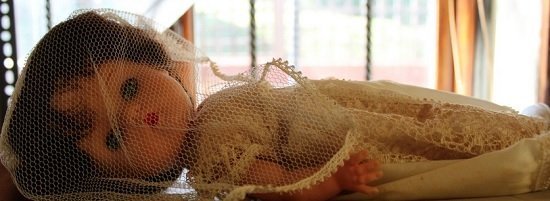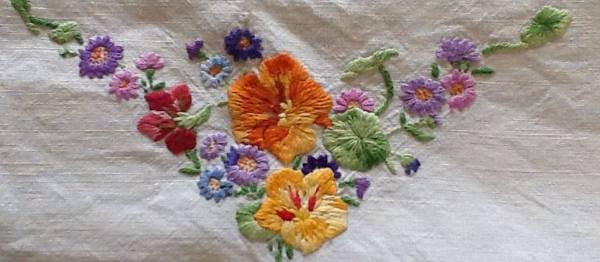Dolls created by Dorothy Heizer and Martha Thompson have cast long shadows; they are as popular today as they were when they were first made. Whatís more, they bring premium prices at auction ñ the ultimate accolade for any artist.
Dorothy preferred cloth as a medium, while Martha preferred porcelain. Dorothyís dolls, with all the fine detail, belong to the 19th century, when Victorian women spent long hours mastering the art of stitchery. Marthaís dolls are as modern as today; she was also a pioneer in porcelain dollmaking and even made her own molds.
Dorothy Wendell Heizer was born in 1881 in Philadelphia on the Main Line. She loved dolls as a child and often sewed for them.
When her mother died at an early age, the motherless child began to concentrate more and more on her artwork. Several years later F.A.O. Schwarz in Philadelphia was buying paper dolls with wardrobes from her for $3.50 per set. Sewing, however, was her real passion, and in her teen years she made all of her own clothes, always choosing quality materials and trims.
In 1899 she enrolled in an art class at the Academy of Fine Arts in Philadelphia. Cecelia Beaux, William Chase, and others instructed her for the next few years.
In 1903, a nervous breakdown forced Dorothy into retirement from art. She gave up her painting ambitions and resumed sewing. Dorothy met Charles W. Heizer, and they were married in 1906 and moved to Colorado where her in-laws taught her even more about fine sewing. Another move in 1913 led them to Essex Falls, N.J. Dorothy continued to improve her skills as a needle woman.
In 1920, Dorothy dressed three dolls for a church bazaar. They were highly praised. It was during this time her rag doll career began. She enrolled in the Pennsylvania Academy of Fine Arts where she studied sculpture, portraiture, and anatomy. Her first of many commissions came from Hicksonís in New York. Mrs. Frank B. Noyes purchased many of her dolls, as did the Newark Museum.
Dorothy also designed doll patterns for the Modern Priscilla magazine. Dollmaking became a full-time career in 1936 when Mr. Heizer died. Notable dolls include: Empress Eugenie, Catherine the Great, Madame Recamier, Queen Victoria and Prince Albert, etc.
In later years she lived in Chatham, N.J. with her artist son. In 1962, her eyesight began to fail, and she gave up dollmaking. In 1973, she died at the age of 92.
Martha Thompson was born in Huntsville, Ala., in 1903, the eldest of three children. Her father, James Lanier Darwin, was a surgeon and physician. Her mother, Martha Lee Patterson, was an artist and pianist.
Growing up in a household blessed with art, music, and literature stirred creative fires in the impressionable child. When Martha was only three years old, she would sit beside her mother and watch her paint miniatures on ivory with watercolor. Martha would then try to duplicate what she had seen. Three years later she wrote a little book which she entitled, The Book of Odds and Ends. She proceeded to illustrate it with detailed silhouettes.
Marthaís art interests included watercolors, pastel portraits of children, pin-and-ink sketches, and clay modeling. She won many awards for her efforts. She attended private and public schools in Huntsville, and later attended Howard Seminary in West Bridgewater, Mass. Her art education encompassed The Newschool of Design, The Massachusetts School of Art, and The Museum of Fine Arts. She married W. Murray Thompson in 1929, and they had two children.
In 1928, Marthaís sister needed some soap dolls for a kindergarten project, and asked Martha if she could carve some ñ which she did. She felt more comfortable with clay modeling and became interested in porcelain dollmaking through her friendship with Emma Clear. When she felt her sculpting techniques were perfected, she began making porcelain dolls and signed them ìMDTî with the date.
Although Marthaís dolls were very professionally conceived, she seemed to have very little ìspareî time to make them, being a wife and mother. Hence her dining room became her studio between meals. (It had the best light.)
Her doll career began, when she sent two of her early dolls, John and Priscilla Alden, to Ruby McKim of Kimport Dolls. The dolls became part of their ìstateî doll series.
Marthaís last years were fraught with illness. She not only suffered from emphysema, but porcelain dust got into the air-conditioner and aggravated the problem. She was a great letter-writer, and answered letters to the very end. She died in 1964.



